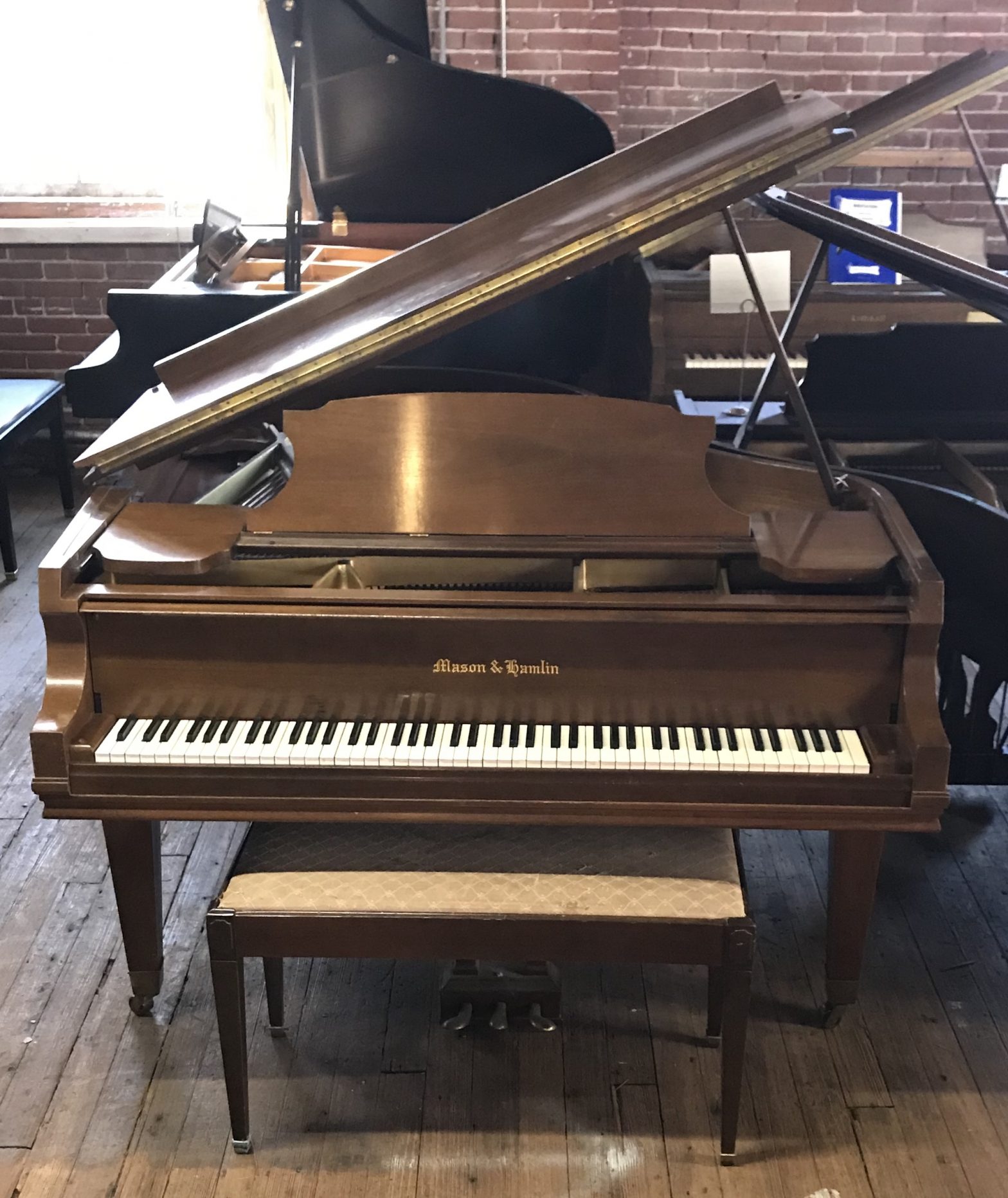

The very first American Cabinet organs (whereas melodeons, sitting up on legs, only had one pedal to supply wind, the cabinet organ, in a boxy case, had two pumping pedals, and within 15 years the melodeon was supplanted by the cabinet organ entirely.) What amazes me was that from the start, they had a full range of organs aimed at every market segment Homes, Lecture Rooms, Chapels, Music teachers and students. In the 1856 catalog of Mason & Hamlin Melodeons and Harmoniums, we see a foretaste of all that came later domestic instruments with f-scale keyboards (melodeons). Boston was a city with robust cultural energies, and from early on was a profound taste-setter and musical influence.

He was apparently not content there, and by fate or by design, he "ran into" Lowell Mason in 1854, and relocated to Cambridge, (a town adjoining Boston) Massachusetts soon thereafter. He had several years experience helping build up George Prince's Melodeon Works into the largest such concern in the country, in an era when the melodeon was the empress of the parlor. He is recognized as a mechanical genius, and is due all accolades. This, however, seems different.Įmmons Hamlin is responsible, basically, for the early success of the company. That's advertising (salesmanship in print). This raised an interesting question: How come really well-known composers (and those less well known for that matter) composed music for this brand but not others? Maybe there is actually some substance to the claims they made in their advertising literature anyone who makes anything will obviously say that it is the best, or the cheapest, or the softest or the most durable or less filling/tastes great. This reached a crescendo in 2003, when Michael Hendron and I teamed up (sort of) to present a program of music written especially for Mason & Hamlin organs, featuring works of Franz Liszt, Lefebure-Wely, Arthur Bird, and others using suitable instruments from my collection (the 33m Liszt, and the 431 Sankey) The concert took place at the first of the biennial Reed Organ Society gatherings which was held in Tuscumbia and Florence AL in March that year.
#Mason hamlin piano value manual#
In 2001, I found a very rare style 86K made of mahogany in NY, and a style 33M one manual Liszt Organ in PA. That was an eye-opener! Then a few years later my first two manual and pedal organ, a style 41Q, an earlier one soon joined it, essentially the same, but with a different ID a style 800. In 1999, a pipe top style 523 Liszt Organ M&H joined the stable. In 1996 I bought another M&H, a Sankey model (style 431) from about 1895. I found there was an organized group, the Reed Organ Society, which I joined, and soon started writing articles for their publication. Knowing very little, but having good instincts from my Historic Preservation training (and my 7 years of music lessons which gave me a good ear) I was captivated by the mechanical genius behind that Hamlin organ, and once it was playable, I was completely in love with the refined, expressive sounds and its capacity to take me back to another time. It was the first "pump organ" that I really restored and tuned to my satisfaction (before that, I tinkered with a basket case that was too far gone to ever come to anything) That Boston-made instrument was quite different from the previous sad organ (C.J.Whitney, Detroit). I have been researching the M&H firm for almost 10 years, but first became a fan almost 30 years ago when I found my first (then very decrepit) Mason & Hamlin organ a style 406 from 1879.
#Mason hamlin piano value update#
Please scroll to the bottom for an important update to the M&H history.


 0 kommentar(er)
0 kommentar(er)
